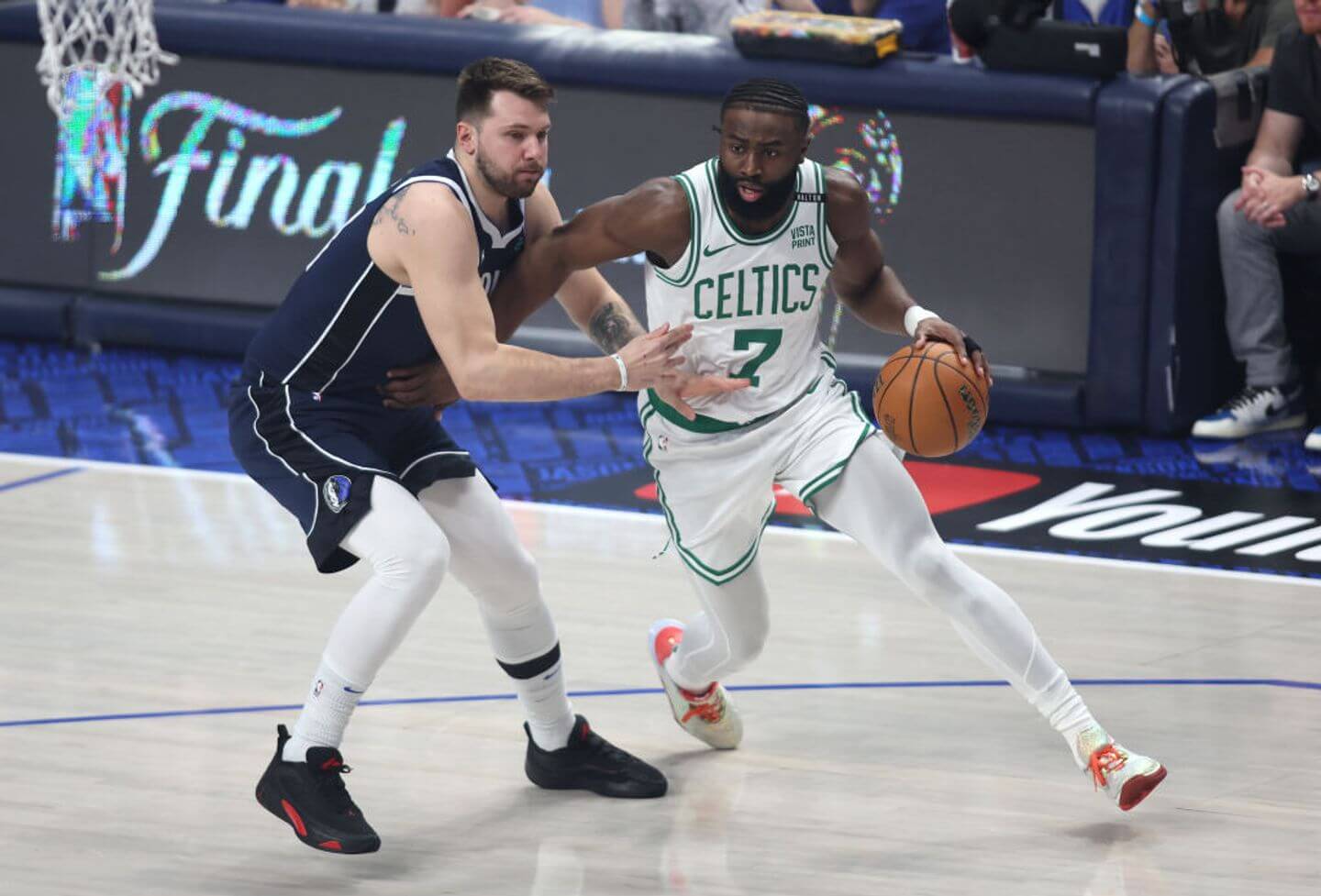(Illustration: Dan Goldfarb / The Athletic; Photo: C. Morgan Engel / Getty Images)
Anthony Edwards could not understand why the whistle came late. Neither could the defender, Christian Braun.
It was Game 6 of a high-stakes playoff game between the Denver Nuggets and Minnesota Timberwolves. With 8:02 remaining in the second quarter, Edwards elevated for a turnaround jumper and Braun hit his left arm before Edwards launched a shot. One of Edwards’ teammates yelled, “Foul!” The ball clanked off the side of the rim. Only then did official Marc Davis use his whistle.
Approximately 1.8 seconds elapsed between the foul and the whistle. In a sign of irritation, Braun and Edwards — the competing sides to the same play — raised their arms in protest. At that moment, even the play-by-play announcer for ESPN noted the whistle “came late.”
It happens almost every NBA game, stirring frustration in players and groans from fans: the dreaded late foul call, otherwise known as a conditional foul. A referee appears to wait to see if a shot goes in before blowing the whistle. If the shot falls, play on. If it misses, the official belatedly awards free throws.
“I mean, you see it, you see it a lot,” LA Clippers star Kawhi Leonard said during the regular season. “I think they want to, you know, keep the game going on. So if a guy makes a shot, they keep it going instead of stopping it and giving him free throws. Or they are just seeing it late. That’s what I think it is.”
When Kevin Durant was asked about similar late calls, he said: “I wish I could tell you the reason why.
“If I had to guess, they don’t want to continue to stop the game and intervene on the free-flowing nature of the game. So sometimes they would rather just keep playing than having to stop the game for a foul call. So, sometimes you can respect that about them and appreciate that. And then sometimes you’re like, ‘S—, let me get that call,’ you know? But they’re trying their best to find a balance of, I guess, chaperoning the game and just kind of letting us do our thing, too.”
Alas, it’s all a big misunderstanding, the NBA says. To understand what’s really happening, according to the league executive in charge of officiating, you need to understand referee mechanics — where they’re positioned on the court and how their line of sight informs when a whistle is blown. So everyone should purge “conditional foul” from their basketball vocabulary and replace it with something called a “cadence whistle.”
“We are not training a result-based whistle, that it’s a conditional foul (where referees may say to themselves): ‘Oh, he missed it, so I’m going to give in to that,’” said Monty McCutchen, a former longtime referee who now runs the league’s referee training and development program. “That’s bad refereeing and I don’t want any part of it.”
Crystal Hogan, a Division I college basketball referee, explained late whistles this way:
“A foul is a foul is a foul… However, something else happens that can appear that the official waited to see if the basket was made when in reality … they were giving the primary official the first opportunity to call the foul. After seeing that the primary official maybe had a bad angle, the official with a better look comes up with the foul, which is called having a late or secondary cadence whistle.”
Continue reading.
GO FURTHER
Those late whistles NBA fans and players hate? There’s a method to the madness

